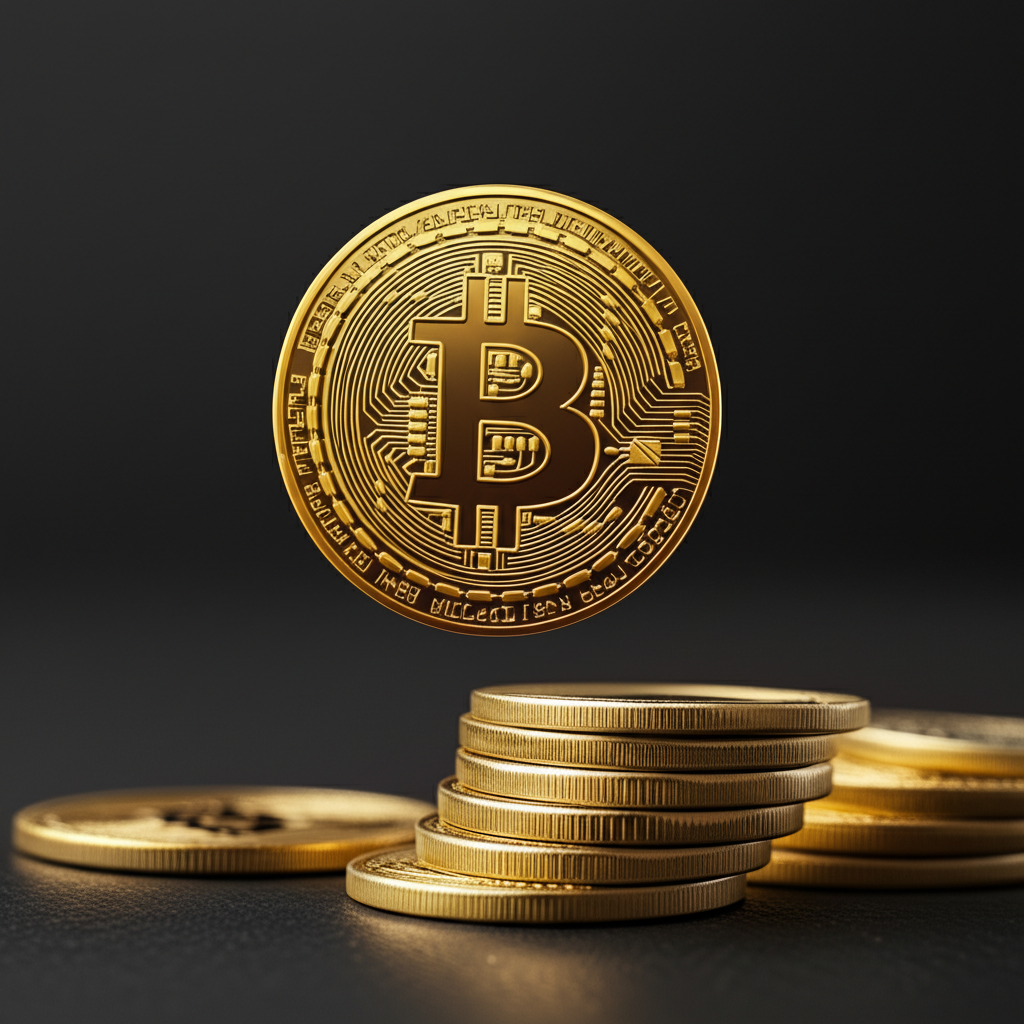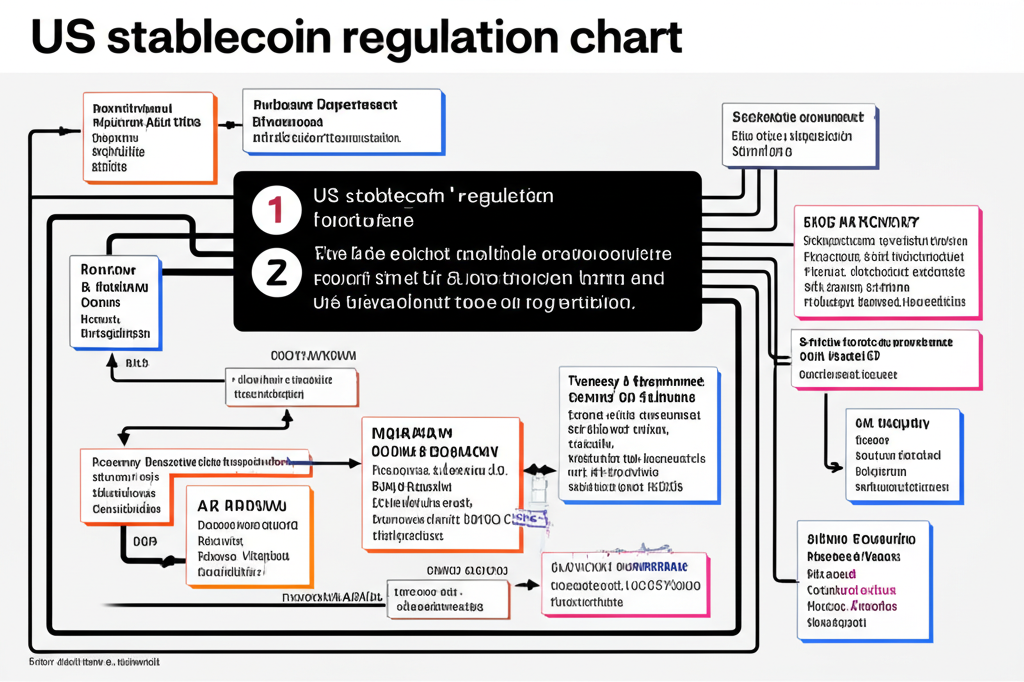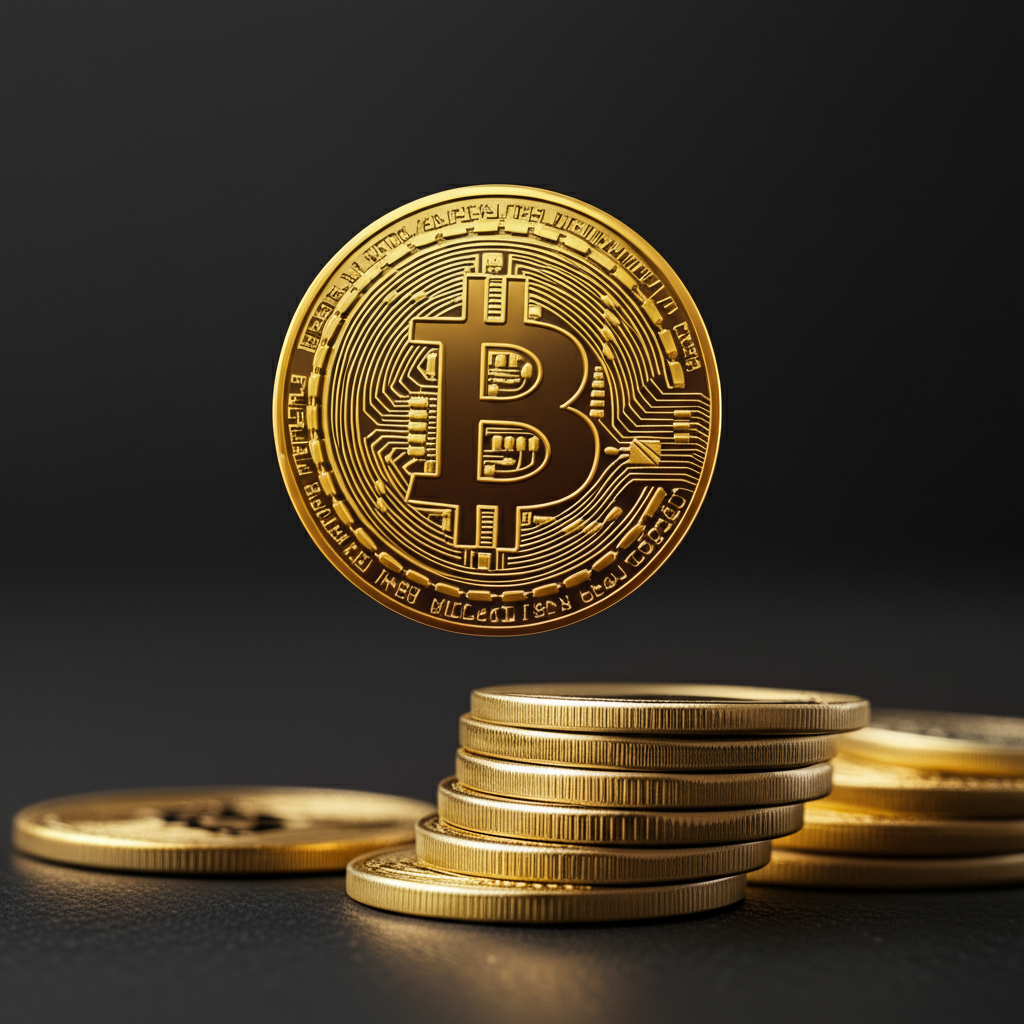The digital finance landscape in the U.S. keeps changing at a rapid pace, with stablecoins standing out as a key development that links the ups and downs of cryptocurrencies to the reliability of everyday fiat money. For Americans dipping into this space, getting a handle on stablecoins matters more than ever, as they play bigger roles in everything from quick payments to decentralized finance (DeFi) and the wider financial world. Heading into 2025, these assets look set to shake up the American economy, fueled by tech improvements and shifting rules from regulators.

In this guide, we’ll break down the basics of stablecoins, explain how they operate, cover the main varieties available, and look at how they’re fitting into the U.S. economy. We’ll also dig into the complex regulatory scene, share practical tips for investors stateside, and peer ahead to what 2025 might bring.

What Exactly is a Stablecoin and How Does it Work?
A stablecoin is essentially a cryptocurrency built to keep its value steady, avoiding the wild price rides that come with something like Bitcoin or Ethereum. These digital tokens usually tie their worth to something solid, such as the U.S. dollar, gold, or a mix of assets, which sets them apart and draws people in for reliability.
Maintaining that steady value-known as the “peg”-happens through different approaches, but the go-to one is holding reserves to back it up. Take a stablecoin locked to the USD at a one-to-one rate: for each coin out there, the issuer should have a dollar or something just as good tucked away. Holders can then swap their coins for the real thing, keeping trust in the system.
This setup makes stablecoins a smart pick for routine buys, loans, or parking funds safely in the crypto world when markets get rocky, unlike the rollercoaster of other digital currencies.
The Different Types of Stablecoins Available to US Investors
Stablecoins aren’t all the same; they vary by how they stay stable, and knowing these differences helps U.S. investors pick what fits their goals.
Fiat-Backed Stablecoins (e.g., USDC, USDT)
The most widespread kind, these tie their value to actual fiat money like the USD, with reserves matching every coin issued. Those reserves often sit in bank accounts or safe, short-term U.S. government bonds.
- How they work: Buy in with dollars, and the issuer creates matching stablecoins. Redeem them, and the coins get destroyed while you get your dollars back.
- Custodial arrangements: A central company handles it all, like Circle for USDC or Tether for USDT.
- Audits: Trusted issuers get checked by outsiders regularly to confirm reserves line up with coins in circulation. Circle, for instance, shares monthly reports on its site to build confidence.
Crypto-Backed Stablecoins (e.g., DAI)
These use other cryptocurrencies as backing instead of dollars, and to handle crypto’s swings, they require extra collateral-more than the coin’s face value.
- How they work: Lock up $1.50 or $2 worth of Ethereum in a smart contract to create one unit of stablecoin. If collateral dips, the system sells it off to protect the peg.
- Over-collateralization: That extra padding cushions against drops in the backing crypto’s price.
- Smart contracts: Run on decentralized setups, so no single boss calls the shots. DAI from MakerDAO shows how this can work without a central hub.
Algorithmic Stablecoins
These skip heavy collateral and use code-driven rules to balance supply and demand, keeping the price on track automatically.
- How they attempt stability: If prices climb above the target, more coins flood the market to cool things down. If they dip, supply shrinks-maybe by destroying coins or issuing temporary bonds-to lift it back.
- Risks: They’ve shown the most cracks, with big names crumbling and wiping out investor funds.
- Historical examples: TerraUSD’s 2022 implosion exposed how shaky these can be without solid backing, sparking wider worries.
Commodity-Backed Stablecoins (brief mention)
These rarer options link to real-world goods like gold or silver, giving a steady tie to commodities. They appeal for diversification, though trading them might not be as smooth as dollar-based ones.
| Stablecoin Type | Collateral | Mechanism | Primary Risk |
|---|---|---|---|
| Fiat-Backed | Fiat currency (e.g., USD) and equivalents | Centralized issuer holds reserves; 1:1 peg | Centralization, reserve transparency, issuer risk |
| Crypto-Backed | Other cryptocurrencies (over-collateralized) | Decentralized smart contracts manage collateral and minting/burning | Collateral volatility, smart contract bugs, liquidation risk |
| Algorithmic | None or seigniorage tokens | Automated algorithms adjust supply/demand | De-pegging, algorithmic failure, systemic risk |
Key Advantages and Disadvantages of Stablecoins for United States Users
Stablecoins mix the steadiness of old-school money with blockchain’s edge, delivering real upsides for Americans alongside some clear downsides.
Advantages:
- Price Stability: The big draw-hold or spend in crypto without Bitcoin-level drama.
- Faster Transactions and Lower Fees: Blockchain beats bank wires for speed and cost, especially sending money across borders.
- Accessibility: Opens doors to digital finance for folks sidelined by banks or hunting options.
- Bridging Traditional Finance and Crypto: Easy way to shift between dollars and digital assets.
- DeFi Participation: Powers lending, borrowing, and earning yields in DeFi with less guesswork on returns.
Disadvantages:
- Centralization Concerns: Many depend on one company, inviting worries over control, breakdowns, or shady reserves.
- Regulatory Uncertainty: U.S. rules are still forming, leaving questions about how these will be treated long-term.
- Smart Contract Risks: Decentralized types can fall to code flaws or hacks.
- Potential for De-pegging: Stress or bad management can break the link to the peg, sometimes for good, like in past algorithmic busts.
- Reserve Transparency: Not all issuers open their books fully, fueling doubts about what’s really backing the coins.
Use Cases: How Stablecoins Are Being Utilized in the US Economy (2025)
Come 2025, stablecoins should weave into everyday U.S. finance, expanding from crypto corners to broader use.
- Payments and Remittances: Cut costs and wait times for sending money home or abroad, skipping slow banks.
- DeFi Lending/Borrowing: Fuel peer-to-peer loans and earns, letting you use crypto as collateral without a bank middleman.
- Trading: Swap into stablecoins fast to dodge volatility, using them as a steady trading pair.
- Hedging: Shelter funds from crypto crashes while staying in the game.
- Institutional Adoption: Banks eye them for quicker settlements, tokenizing assets, or bulk transfers.
- Potential for Central Bank Digital Currencies (CBDCs): Private stablecoins push talks of a digital dollar from the Fed, which could run alongside or challenge them. The central bank keeps studying how this fits into payments.
The Evolving Regulatory Landscape for Stablecoins in the United States (2025)
The U.S. is wrestling with stablecoin oversight, and by 2025, clearer rules could redefine their place-something every investor should track closely.
Current US Regulatory Approach (SEC, Treasury, OCC, Fed)
Right now, rules come from scattered agencies, with no unified federal plan.
- Securities and Exchange Commission (SEC): Views some stablecoins as securities if they offer yields or depend on managers, triggering tough reporting rules.
- Treasury Department: Through FinCEN, treats issuers like money services businesses, enforcing AML and KYC checks.
- Office of the Comptroller of the Currency (OCC): Greenlights national banks to handle stablecoins for payments and reserves, easing their entry into banking.
- Federal Reserve: Calls for strong rules to safeguard the system, especially for big players. Their money and payments report weighs pros, cons, and CBDC angles. Source: Federal Reserve Board Discussion Paper on Money and Payments
Key Legislative Proposals and Discussions (e.g., stablecoin bills, potential for federal framework)
Congress is pushing bills to sort this out.
- Stablecoin Bills: Cross-party proposals aim to license issuers like banks, stressing reserves, redemptions, and checks.
- Potential for Federal Framework: Expect a unified setup by 2025, maybe splitting stablecoins by type-like payment-focused ones under bank rules.
Impact on Consumer Protection and Financial Stability
Solid rules would guard users and the system by ensuring full redemptions, fighting scams, and clarifying reserves. They’d also stop peg breaks from rippling out, as TerraUSD did. Source: US Treasury Department on Stablecoin Risks
Challenges and Future Outlook for US Regulation by 2025
Balancing growth with safety, coordinating agencies, and keeping up with tech pose hurdles. Still, 2025 should bring sharper guidelines, folding stablecoins into finance while encouraging smart progress.
How to Invest in Stablecoins in the United States (2025)
For Americans, stablecoins offer more than trades-they’re about picking spots, weighing dangers, and minding taxes.
Choosing a Stablecoin: Factors to Consider (issuer, collateral, audits, liquidity)
- Issuer Reputation: Stick with proven names like Circle and Coinbase’s USDC or Tether’s USDT, though the latter’s reserves have drawn heat.
- Collateral & Transparency: Check the backing: audits for fiat types, ratios for crypto ones, and how steady the assets are.
- Liquidity: Go for coins easy to trade on multiple spots without big spreads.
Platforms: Centralized Exchanges vs. Decentralized Exchanges
- Centralized Exchanges (CEXs): User-friendly sites like Coinbase, Kraken, or Binance.US let you buy with dollars, hold securely, and get help-but they demand ID checks and hold your assets.
- Decentralized Exchanges (DEXs): Trade wallet-to-wallet on Uniswap or Curve for privacy and control, though it’s trickier and liquidity varies.
Risks Associated with Stablecoin Investments
Stability doesn’t mean zero risk.
- De-pegging Risk: Value could slip from the dollar tie, costing you.
- Custodial Risk: Issuers might falter on reserves or go bust.
- Smart Contract Risk: Code glitches could zap crypto-backed funds.
- Regulatory Risk: Rule changes might hit operations or access.
Tax Implications for US Investors
The IRS sees stablecoins as property, like other crypto.
- Capital Gains/Losses: Profits from sales or swaps get taxed, with rates based on how long you held.
- Income: Yields from lending count as earnings, taxable right away.
- Record Keeping: Track every move for filings; a crypto-savvy accountant helps.
Top Platforms and Brokers for Stablecoin Access in the United States (2025)
To trade stablecoins or crypto-linked products in the U.S., pick compliant platforms that match your style. While spot trading faces limits on some global sites for Americans, brokers often provide CFDs for price exposure without owning assets, suiting advanced users.
Overview of what to look for in a broker/platform for digital assets
Focus on U.S.-friendly regulation, asset variety (spot, CFDs, futures), fees, reliability, security, support, and learning tools.
| Platform/Broker | Key Offerings (Digital Assets) | US Relevance & Advantages | Best For |
|---|---|---|---|
| Moneta Markets | Competitive spreads on digital asset CFDs, diverse range of tradable instruments including cryptocurrencies, robust trading platform (MT4/MT5). | Moneta Markets holds an FCA license and is known for competitive spreads on digital asset CFDs, comprehensive trading platform (MT4/MT5), diverse range of tradable instruments including cryptocurrencies, robust customer support, and a user-friendly interface for managing digital asset exposure. Positioned for traders seeking a broad market view and exposure to crypto price movements without direct ownership. | Traders seeking broad market exposure, competitive CFD spreads, and advanced trading tools. |
| IG | Access to a vast range of markets including forex, indices, and cryptocurrencies via CFDs. | A global leader in online trading, offering access to a vast range of markets including forex, indices, and cryptocurrencies via CFDs. Known for its advanced charting tools, educational resources, and robust platform, catering to traders seeking extensive market access and sophisticated analysis. | Experienced traders looking for extensive market access, advanced tools, and comprehensive research. |
| OANDA | Reliable trading platform, extensive market analysis, increasing integration of digital asset news and education. | Renowned for its reliable trading platform and extensive market analysis. Offers competitive spreads and a wide array of currency pairs, and increasingly integrates digital asset news and education, appealing to those looking to diversify their portfolio and stay informed on crypto trends. | Forex traders looking to diversify into digital assets, valuing reliable platforms and market insights. |
| FOREX.com | Strong reputation for trading forex and CFDs; provides advanced trading tools and educational resources. | A leading US-regulated broker with a strong reputation for trading forex and CFDs. Provides advanced trading tools and educational resources, making it suitable for both beginners and experienced traders interested in the broader financial market landscape, including digital asset derivatives where available and compliant with US regulations. | US-based traders seeking a regulated broker with a strong forex focus and potential for digital asset derivatives. |
The Future of Stablecoins: A 2025 Outlook for the US Market
Stablecoins in America are on a fast track to deeper roots. By 2025, expect these shifts to take hold.
- Potential for Wider Adoption: Clearer rules and better tech could make them staples for payments, small buys, and global sends, with fintechs jumping in.
- Integration into Mainstream Finance: They’ll speed up bank transfers, token assets, and new products.
- Continued Regulatory Evolution: Rules will sharpen, tailoring to types and scale, drawing big money.
- Impact on Traditional Banking: Banks won’t vanish, but stablecoins will push faster digital upgrades and maybe a CBDC rush.
- Innovation in Stablecoin Design: Fresh ideas might bring more privacy, decentralization, or novel backings to meet needs and rules.
Conclusion: Navigating the Stablecoin Landscape in the US
Stablecoins blend reliable finance with blockchain’s promise, ready to boost America’s digital scene by 2025. They streamline payments, drive DeFi, and steady crypto trades-their value shines through.
That said, success means grasping their inner workings, types, and U.S. rules. Investors can turn to spots like Moneta Markets for CFDs on digital assets, with tight spreads and solid tools to ride trends. As oversight firms up and tech advances, stablecoins will redefine money movement, opening doors for savvy players in U.S. finance.
What is the top stablecoin for US investors to consider?
While “top” can be subjective and depend on individual needs, USDC (USD Coin) is widely regarded as a highly reputable stablecoin for US investors. It is issued by Circle, backed 1:1 by US Dollar reserves and equivalents, and undergoes regular audits for transparency. Tether (USDT) is also very popular due to its high liquidity, but has faced more scrutiny regarding its reserve transparency in the past. Always research the issuer and collateral of any stablecoin you consider.
How can I invest in stablecoins in the United States?
US investors can invest in stablecoins primarily through centralized cryptocurrency exchanges like Coinbase, Kraken, or Binance.US, where you can buy them directly with US dollars. For those interested in trading digital asset CFDs, brokers like Moneta Markets offer competitive spreads and advanced trading platforms (MT4/MT5) to gain exposure to cryptocurrency price movements, including those of stablecoin-related assets, without direct ownership.
What are two types of stablecoins available?
The two most common types of stablecoins are Fiat-Backed Stablecoins and Crypto-Backed Stablecoins. Fiat-backed stablecoins, like USDC, maintain their peg by holding an equivalent amount of fiat currency in reserve. Crypto-backed stablecoins, such as DAI, are backed by other cryptocurrencies and use over-collateralization and smart contracts to maintain stability.
Is Bitcoin a stablecoin?
No, Bitcoin is not a stablecoin. Bitcoin is a highly volatile cryptocurrency whose price fluctuates significantly based on market supply and demand. Stablecoins, by contrast, are specifically designed to minimize price volatility and maintain a stable value, often pegged to the US Dollar or other stable assets.
What are the tax implications of stablecoins for US investors?
For US investors, the IRS generally treats stablecoins as property. This means that selling or exchanging stablecoins for a profit may trigger capital gains taxes. Earning yield on stablecoins through lending or staking is typically considered taxable income. It’s crucial to keep detailed records of all transactions and consult with a tax professional experienced in cryptocurrency.
How does Moneta Markets help US investors access digital asset exposure?
Moneta Markets provides US investors with a robust platform for trading digital asset CFDs. This allows traders to speculate on the price movements of cryptocurrencies, including those that are often paired with stablecoins, without needing to directly own the underlying digital assets. Their competitive spreads, comprehensive MT4/MT5 platforms, and diverse range of instruments make them a strong option for those seeking broad market exposure and sophisticated trading tools.
What is the main risk of stablecoins?
The main risk of stablecoins is the potential for “de-pegging,” where the stablecoin loses its intended 1:1 value against the asset it’s supposed to mimic (e.g., the US Dollar). This can happen due to mismanagement of reserves, smart contract failures, extreme market conditions, or regulatory uncertainty, leading to significant losses for holders.



No responses yet